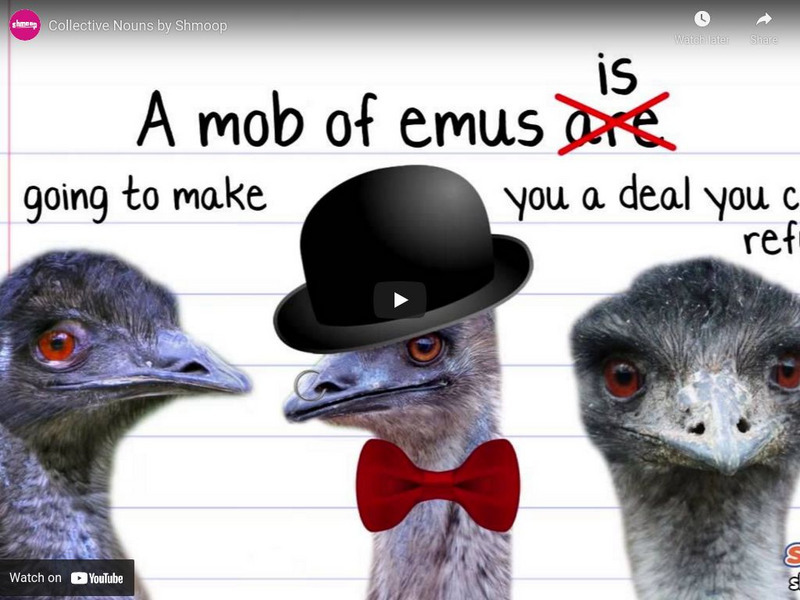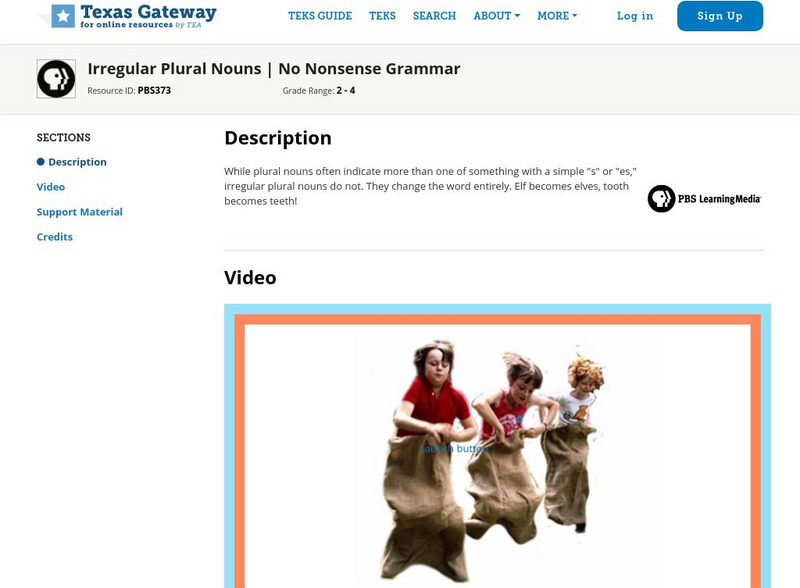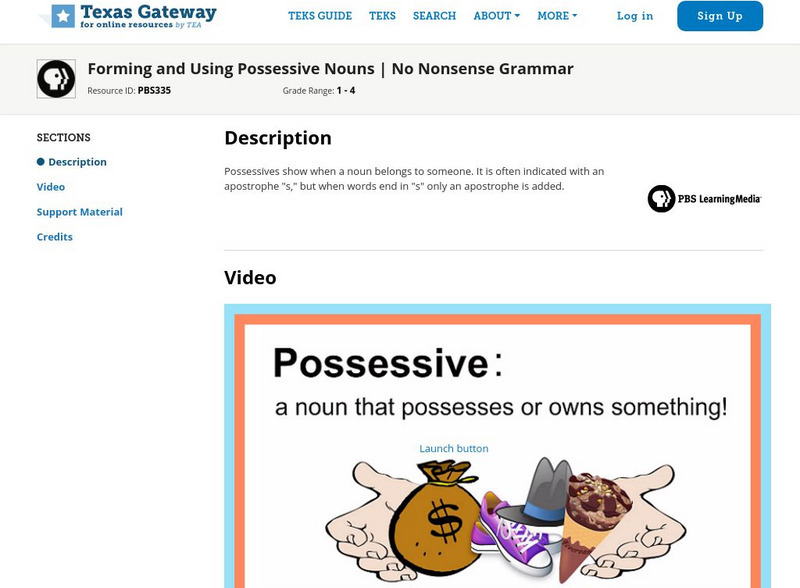TED-Ed
When to Use "Me", "Myself" and "I"
Clarify your kids' writing with a video about pronouns, specifically me, myself, and I. As kids watch the short video, they see cute robots demonstrate the proper use of each pronoun, as well as the definitions of...
Rockin' English Lessons
Head, Shoulders, Knees and Toes
Listen and move with this music video featuring a modern take on the children's song, Head, Shoulders, Knees, and Toes. Scholars sing along with a slow, medium, and fast tempo, and observe hand-drawn animation that highlights the...
Laura Candler
ABC’s of Me!
Young authors share all about themselves with this printable autobiography resource. Including 26 different sentence frames, one focusing on each letter of the alphabet, students write about everything from an adventure they...
Khan Academy
Khan Academy: Introduction to Singular and Plural Nouns
What is the difference between singular and plural nouns? How can I make a noun plural? These questions are answered in this video by Khan Academy. The focus is on regular plural nouns with only a brief mention of irregular plural nouns.
Turtle Diary
Turtle Diary: Collective Nouns
This video presents a thorough explanation of collective nouns, including what they are and how they are usually structured in a sentence. Plenty of examples support learning this concept.
Turtle Diary
Turtle Diary: Proper Noun
This TurtleDiary interactive video lesson features information about proper nouns. Rules related to proper nouns and the application of capitalization rules are included. Games and worksheets are provided to supplement this proper nouns...
Turtle Diary
Turtle Diary: Singular & Plural Nouns
This TurtleDiary video lesson [11:03] is designed for students to explore singular and plural nouns. Practice exercises, a video, and a lesson are included to supplement this singular and plural nouns lesson.
Texas Education Agency
Texas Gateway: What Are Collective Nouns: No Nonsense Grammar
This video focuses on the collective noun, a word that refers to a group, such as a collection, a herd, a team.
Understood For All
Understood.org: Video: How First Graders Learn to Research and Organize Ideas
In this video from GreatSchools, viewers will observe strategies that first graders use as they research topics and organize new information. Observers will note the conversations about what they learn and examples of note taking. [1:45]
Curated Video
You Tube: Verbs With Singular and Plural Nouns
This video provides many examples of how verbs change depending on whether the noun is singular or plural. [5:48]
Shmoop University
Shmoop: Collective Nouns
So you know that birds of a feather flock together, but a flock of birds doesn't always fly together. What if one bird goes rogue and flies out of formation? Do you then say that the flock are flying? Or are they still a single entity...
Khan Academy
Khan Academy: Introduction to Singular and Plural Nouns
Learn the difference between singular and plural nouns.
Khan Academy
Khan Academy: Introduction to Nouns
A noun is a word that describes a person, place, thing, or idea. Examples of nouns include names, locations, objects in the physical world, or objects and concepts that do not exist in the physical world; for example, a dream or a theory.
Khan Academy
Khan Academy: Irregular Plural Nouns Foreign Plurals
You don't need to know how to speak Latin and Greek in order to understand English, but some words in English come from those languages. It's helpful to know how some Greek and Latin words change from singular to plural.
Texas Education Agency
Texas Gateway: Irregular Plural Nouns: No Nonsense Grammar
While plural nouns often indicate more than one of something with a simple "s" or "es," irregular plural nouns do not. They change the word entirely. Elf becomes elves, tooth becomes teeth.
Texas Education Agency
Texas Gateway: Forming and Using Possessive Nouns: No Nonsense Grammar
This video focuses on forming and using possessive nouns; they show when a noun belongs to someone. It is often indicated with an apostrophe "s," but when words end in "s" only an apostrophe is added.












